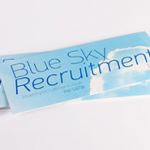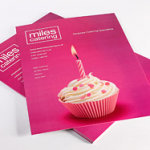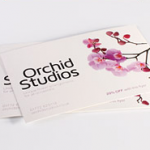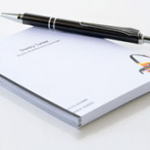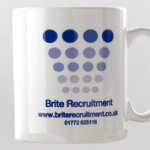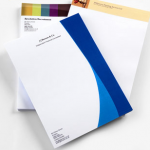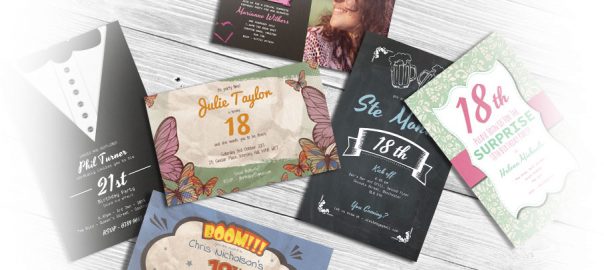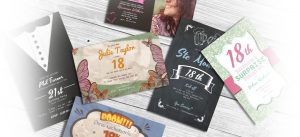If your business requires the use of a lot of paper – for example, you regularly send paper invoices, receipts, or letters to your customers – you may have wondered whether it’s worth investing in recycled paper for your business stationery.
The short answer is yes! It’s time we all started thinking about our impact on the environment, and how small changes can make a big difference. We’ve all heard about the impact that natural resource overuse is having on our planet. These days, customers are explicitly looking to shop with businesses that are trying to reduce their impact on the environment.
There are many reasons to use recycled paper for your business stationery. Firstly, it is better for the environment because it reduces waste and saves trees. It also has many benefits that make it a worthwhile investment for any company, including being just as durable as normal paper and making your company more “green” in the eyes of consumers.
So, should you switch? In this blog post we will explore the benefits of using recycled paper and why you should use it for your business stationery.
What Is Recycled Paper?
Recycled paper is made by recycling old, used papers. This sounds like it would be a messy and difficult process but in reality it is actually quite simple.
First of all, waste paper is collected from the recycling bins of homes and businesses. When it arrives at the recycling plant, the paper is separated into different grades, including cardboard and different weights of paper. It’s then thoroughly washed, to remove things like glue and ink.
The washed paper is then fed through an industrial pulping machine that grinds everything up and mixes it with water, to create a slurry. At this stage, different materials can be added to the slurry depending on which type of paper product is being made.
Next, the paper slurry is spread into sheets using huge rollers. It’s then left to dry completely before it can be rolled up before being cut into the right size and shape.
The whole point of using recycled paper is that it uses much less energy and resources compared to the raw materials used for virgin paper. It also helps to reduce waste by collecting all the used paper products that would otherwise be thrown into landfill.
Why Is Recycled Paper Better for the Environment?
It makes sense to use recycled paper instead of new paper because it uses less energy and natural resources, which is better for the environment. Recycling just one tonne of old paper products saves, on average:
1) 7000 gallons of water
2) 4000 KW of energy
3) 17 trees
4) 380 gallons of oil
5) 3 cubic metres of landfill space
Let’s take a closer look at how much water, wood, energy, oil and space you can save by using recycled paper for your business stationery.
Recycled Paper Uses Less Water
The amount of water recycled paper uses during production is a lot less than new paper. This is because the manufacture of new paper requires huge amounts of water, including the use of tons of bleach during production.
This may not seem like it makes much difference, but when you think about the world’s population and how many things we need to produce then every little bit does count.
To create one tonne of recycled paper, around 35,000 fewer litres (approx. 7700 gallons) of water will be used in the process than it would take to produce the equivalent of virgin paper.
Recycled Paper Uses Less Energy
One of the most obvious benefits of recycled paper is that it uses much less energy. When you consider how much electricity a modern business will use, every little bit counts towards reducing our carbon footprint and saving more natural resources for future generations to enjoy.
On average, it takes around 31% less energy to create recycled paper vs virgin paper fibre. And an added bonus is that around 44% less greenhouse gases are emitted in the production of recycled paper.
Recycled Paper Uses Less Wood
Obviously, to produce brand new paper, you need to cut down trees. But this isn’t the case with recycled paper. The production of recycled paper only requires used materials, such as scrap paper, old documents and recycled newspaper.
In fact, it’s estimated that around 17 trees are saved for every tonne of paper made from 100% recycled content vs the same amount of virgin paper.
This means there are fewer forests being destroyed. Trees are one of the planet’s most valuable resources, so we should do our best to ensure they aren’t over-harvested.
Recycled Paper Uses Less Oil
The actual process of creating brand-new paper from wood is a lengthy one. It requires the use of a lot of heavy machinery at various different stages to cut down and transport trees, chop up the wood into useable lengths, and extract the cellulose fibres which will then be turned into paper pulp. And of course, all of this machinery and transport uses oil and other types of fuel.
Recycled paper doesn’t require anywhere near as much processing. This means there’s less oil used when recycled paper is printed, which makes it vastly more environmentally friendly. An average of 380 gallons of oil is spared when creating one tonne of recycled paper vs new paper. Oil is a valuable natural resource that’s already running low, so it’s vital to reduce our consumption of it in any way we can.
Recycled Paper Helps Reduce Waste
By creating recycled paper, we are also reducing the amount of paper rubbish that goes to landfill. Think about it – all those old paper products would just be thrown out if they weren’t recycled, and this does actually account for a lot more than most people realise!
Furthermore, the actual manufacture of paper creates waste that needs to be discarded. The manufacture of recycled paper results in 39% less solid waste and 53% less waste water than the production of brand new paper.
Is Recycled Paper Strong Enough for Business Stationery?
One thing people worry about when considering using recycled paper over normal printing is its durability and quality.
It’s true that paper recycling technology hasn’t always been the best, but it’s come a long way in the past few decades. Nowadays, good-quality recycled paper is virtually indistinguishable from normal paper. It’s exactly as strong and durable, and lasts just as long.
Our recycled paper is 100 gsm, so slightly thinner than our standard paper which is 120 gsm. However, this makes little difference. It’s perfect for business stationery like letterheads or envelopes. And, of course, your customers can recycle it again when they’re done with it!
Does Recycled Paper Look Different to Normal Paper?
The great thing about recycled paper is that, to the naked eye, you (and your customers) won’t be able to tell that it’s recycled. Recycled paper can come in both matte and gloss varieties, and looks and feels the same to normal paper.
If you held a non-recycled envelope next to a recycled one, you may be able to distinguish them – but if your customers aren’t looking for it, they won’t notice it. This means that no one will ever know your stationery came from recycled sources unless you want them to (for whatever reason).
Is Recycled Paper More Expensive Than Normal Paper?
Unfortunately, recycled paper does cost more to buy than normal paper. That’s because it’s more of a difficult, lengthy and costly process to make it, and it’s less abundant than new paper. On average, recycled paper costs about 25% more than normal printing paper.
But all in all, because paper is fairly cheap to begin with, recycled paper business stationery is still extremely affordable. It’s well worth it considering the environmental benefits, and the way that it will help your business stand out against your competitors.
Do Customers Prefer Businesses that Use Recycled Paper?
By using recycled paper instead of new pulp-made materials, you’re helping to reduce your carbon footprint. Customers are becoming more aware every day about how their choices can help or harm the environment – and this means they appreciate businesses that make green decisions by choosing recycled stationery over normal printing processes.
Many consumers are becoming wise to the impact that businesses, both large and small, are having on the world’s resources and energy use. By choosing recycled stationery you are making a strong statement about your business.
Customers who care about climate change will absolutely love working with a company that cares about the environment. Using recycled paper for letterheads or envelopes can be an excellent way of attracting new customers, as well as giving your established customer base a reason to continue shopping with you.
Where Can I Order Recycled Business Stationery?
At 123Print, we offer a variety of recycled paper letterheads and envelopes, perfect for any business or personal use. Head to our website to check out our huge range of recycled envelope and letterhead templates, to suit a wide range of styles, tastes and niches.
The recycled paper that we use is environmentally friendly and made of 100% recycled PCW (post-consumer waste). Its 100 gsm weight and professional quality is perfect for all of your business needs.
Simply use our easy editor to start customising your preferred envelope or letterhead template and add your personal details. We offer rapid 48-hour dispatch and a 100% satisfaction guarantee on all orders. Join our thousands of satisfied customers today at 123Print!

